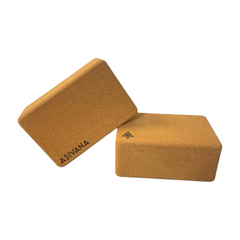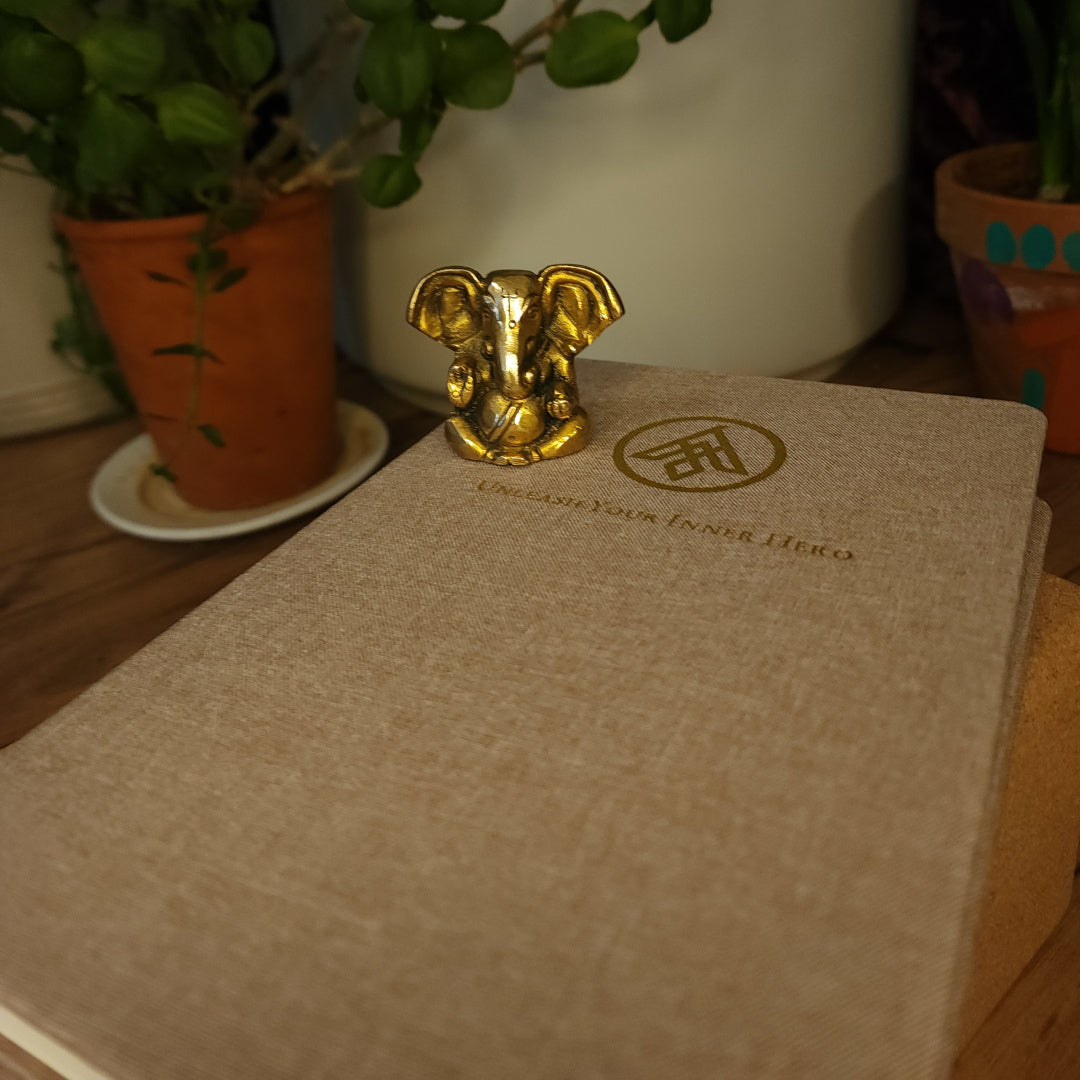
What is the Dvapara Yuga?
Jack UtermoehlShare
Dvapara Yuga is the third age in the traditional four-age cycle of time known as the chaturyuga in Hindu cosmology.
Following the Satya Yuga and Treta Yuga, Dvapara Yuga marks a continued decline in virtue and consciousness, leading toward the current age of Kali Yuga.
The word "Dvapara" can be translated as "the second best" or "third in line," reflecting its place in the descending arc of Dharma (cosmic order).
Etymology and Meaning
- Sanskrit: द्वापर युग (Dvāpara Yuga)
- Transliteration: Dvāpara Yuga
- Phonetic Pronunciation: DWAH-puh-rah YOO-guh
- Root Meaning: "Dva" means two, suggesting duality or partialness indicating that only half of Dharma remains in this age.
In symbolic terms, Dvapara Yuga is the age where doubt and duality begin to significantly influence human consciousness.
Dharma, once whole in Satya Yuga and mostly intact in Treta Yuga, now stands on two legs, signifying a world where righteousness and unrighteousness are evenly matched.
Duration and Timing
| Tradition | Duration | Details |
|---|---|---|
| Puranic (Classical Hinduism) | 864,000 earth years | Consists of 2,400 divine years (1 divine year = 360 earth years) |
| Sri Yukteswar's Interpretation | 2,400 earth years | Part of a 24,000-year Yuga Cycle (Ascending & Descending) |
According to the traditional view, Dvapara Yuga occurred just before the current age (Kali Yuga), ending at the departure of Lord Krishna from the earth, around 3102 BCE.
In Sri Yukteswar’s revised timeline, we are currently living in the Ascending Dvapara Yuga, which began around 1700 CE and will last until approximately 4100 CE.
Scriptural Source References
Mahabharata (Shanti Parva 231): Explains that Dharma stands on two legs in Dvapara Yuga, as truth and virtue are weakened by doubt and desire.
Vishnu Purana (Book IV, Chapter 24): Provides precise time calculations for each Yuga and describes societal conditions marked by both virtue and vice.
Bhagavata Purana (12.3): Describes increasing ritualism, shortened lifespan, and recommends temple worship as the dharmic path for this age.
Manusmriti (1.81–86): Lays out the full timeline of the Yugas, their proportions, and the decay of Dharma across ages.
“In Dvapara Yuga, people were of medium stature and lived for hundreds of years. They desired truth but were plagued by doubt, performing rituals with increasing complexity.”- Summary from Bhagavata Purana
“Dharma stands on two legs; the other two are lost to falsehood and pride.”
- Mahabharata, Shanti Parva

Explore Our Full Collection
Discover all the yoga essentials and accessories you need to enhance your practice. Shop now and elevate your yoga practice.
Shop NowDefining Characteristics of the Age
Dvapara Yuga is a transitional era positioned between the spiritual clarity of Treta Yuga and the moral decline of Kali Yuga.
This age is marked by growing duality, intellectual expansion, and rising ego. Dharma stands on only two legs, symbolizing that righteousness is still present but increasingly compromised.
| Aspect | Dvapara Yuga |
|---|---|
| Human Lifespan | Hundreds of years (commonly cited as 1,000 years) |
| Moral State | Half of Dharma remains; balance between virtue and vice |
| Behavior | Increased confusion, ego, rivalry, and reliance on rituals |
| Society | Hierarchical, with caste and stage-of-life systems (varṇa and āśrama) fully established |
| Technology & Knowledge | Growth in scientific knowledge, architecture, and astrology; Vedas divided into four parts |
| Symbolic Dharma Bull | Stands on two legs, truth and compassion remain, but austerity and purity are weakened |
This era holds the tension of opposites where people yearn for truth but are increasingly distracted by desire. It is an age of great heroes and complex dharma, exemplified by the lives of Krishna, the Pandavas, and the Kauravas.
Spiritual Practice of the Yuga
As spiritual capacity declines from earlier ages, the path of yoga must adapt to reach the collective consciousness of the time. In Dvapara Yuga, the recommended spiritual practice is temple worship and ritual-based devotion, known as archana (worship or prayer).
- Primary Practice: Worship of deities through temples, offerings, mantras, and rituals
- Vedic Role: The four Vedas are fully compiled and studied separately to support ritual accuracy
- Accessibility: Ritual knowledge is held primarily by Brahmins, leading to both devotion and exclusivity
- Spiritual Tone: Focus shifts from inner realization to outer observance and priestly authority
This externalized form of devotion suits the emerging dualistic mind of Dvapara Yuga. Though spiritual depth is still possible, it is increasingly mediated through ceremony, structure, and intermediaries.
Comparison of Yuga Practices:
- Satya Yuga: Meditation and self-realization
- Treta Yuga: Fire sacrifice (yajña) and devotion
- Dvapara Yuga: Temple worship and ritual
- Kali Yuga: Chanting the Divine Name (Hari Nama)
Avatars of Vishnu in This Age
The Dvapara Yuga is marked by the appearance of one of the most celebrated avatars of Vishnu: Shri Krishna. Born toward the end of this age, Krishna’s life and teachings serve as the culminating guidance before the onset of Kali Yuga.
Avatar: Krishna
Role: Divine strategist, protector of Dharma, and teacher of the Bhagavad Gita
Symbolic Function: Embodiment of divine love and cosmic intelligence, Krishna reveals how to act in the world with non-attachment and devotion
Krishna’s presence signals the final defense of righteousness before its sharp decline in Kali Yuga. His departure marks the end of Dvapara and the beginning of the dark age.
Modern Interpretations
While traditional timelines consider Dvapara Yuga long past, some modern teachers offer alternative views.
Sri Yukteswar & Yogananda
In The Holy Science, Sri Yukteswar proposes that the Yuga cycle is only 24,000 years long, not millions, and that we are currently in the Ascending Dvapara Yuga, which began around 1700 CE. He believed this age is defined by humanity's growing awareness of energy and subtle forces.
Paramhansa Yogananda expanded this idea, teaching that scientific breakthroughs and the spread of yoga are signs of rising consciousness in Dvapara. In this view, Dvapara is not past but unfolding now.
Sadhguru
Sadhguru describes Dvapara Yuga as a time of duality and complexity when the mind becomes more active, but clarity begins to wane. He emphasizes the need for conscious discipline and yogic tools to navigate the inner confusion of this era.
Symbolic Readings
Psychologically, Dvapara Yuga can be seen as the age of the divided self: caught between aspiration and desire, wisdom and confusion. It represents the struggle for balance and the need to anchor one's life in clear principles amidst complexity.
Relevance for Today
If we view Dvapara Yuga symbolically or as part of a shorter cycle, it offers relevant insights for modern life. Many spiritual seekers today feel caught between ancient truths and modern distractions precisely the tension this Yuga describes.
Yoga practice in Dvapara Yuga is not just about rituals, but about reconnecting to the heart of devotion through structure. It's to stay grounded in sacred rhythm even as complexity grows.
Whether we're ascending through Dvapara now, or reflecting on its lessons from the past, the age invites us to examine:
- What rituals or habits help you stay aligned with your values?
- How do you balance inner longing with outer responsibility?
- Where is your devotion placed?
Consider journaling on how structured practices (like mantra, prayer, or daily discipline) support your journey through a fragmented world.
Yoga Essentials for Your Practice
Support your yoga journey with high-quality, sustainable props designed for comfort and stability.

Crafted from eco-friendly cork for durability and a comfortable practice.
$24
Shop Now
Includes everything you need to get started: a mat, blocks, and a yoga strap.
$120
Shop NowConclusion
Dvapara Yuga is the turning point of the Yuga Cycle. A liminal space where wisdom still shines, but shadows begin to grow. In this age, truth and illusion wrestle openly, and spiritual practice requires both discernment and devotion.
Whether seen as a past era or a living metaphor, Dvapara reminds us of the need to build a bridge between knowledge and spirit.
Understanding this Yuga helps us see where we are on the cosmic wheel and how to stand firmly on the two remaining legs of Dharma: satya (truth) and Karuna (compassion).
May this perspective deepen your practice, sharpen your awareness, and remind you that even amidst confusion, the path remains lit by the heart, and sustained through effort.










